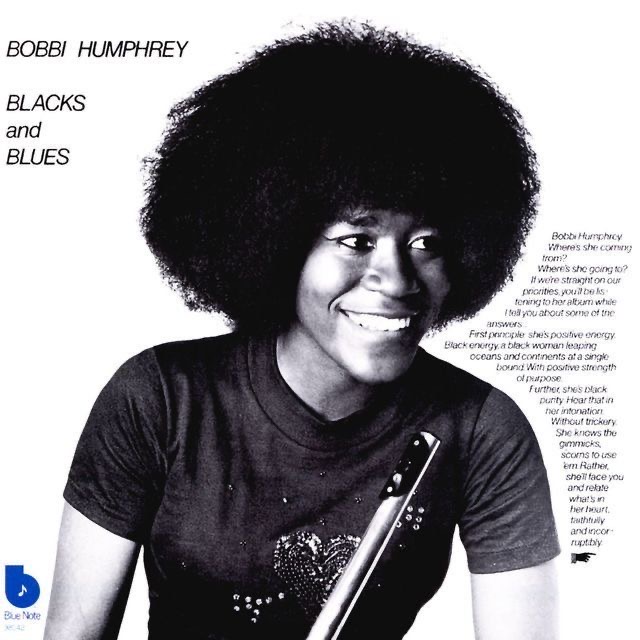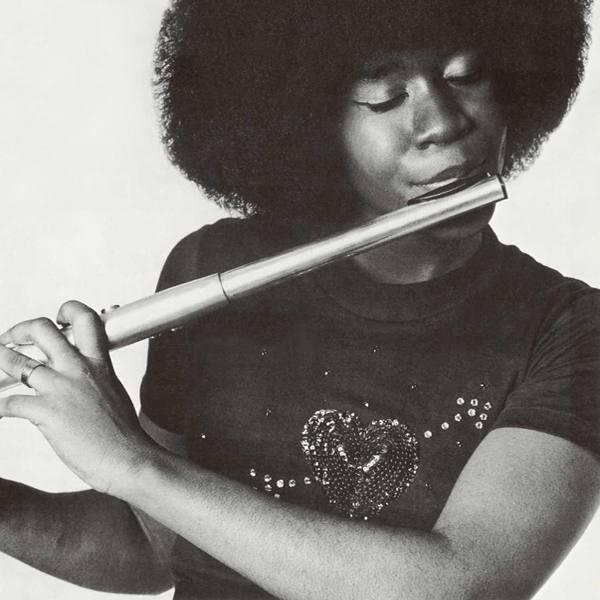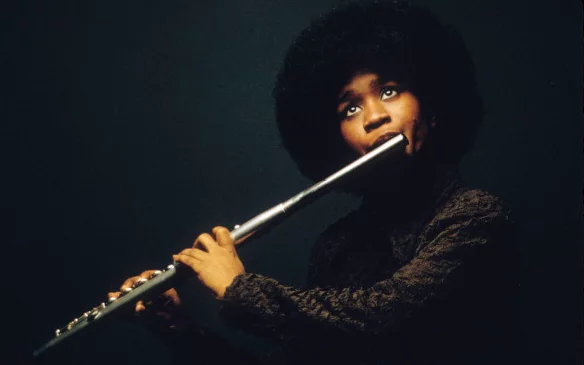Dive into the Power & Passion of ‘Tenor Madness
In the vast panorama of jazz, Sonny Rollins’ “Tenor…
Today, on Bobbi Humphrey‘s birthday, we celebrate the enchanting allure of her third album, “Blacks and Blues.” Released in 1973, this seminal work showcases Humphrey’s deft touch on the flute and her foray into vocal performance.

The recording sessions for this jazz-funk gem took place at The Sound Factory in Los Angeles, California, over three days: June 6, 7, and 8, 1973. Blue Note Records, the prestigious label, saw the potential in this project, and the results speak for themselves.
Bobbi Humphrey, born in Marlin, Texas, gained prominence in the jazz scene for her unique approach to the flute. Her style, influenced by Herbie Mann and Hubert Laws, thrives in R&B and pop contexts, making her a versatile performer. Leading up to “Blacks and Blues,” Humphrey had already released two successful albums, laying the foundation for her continued success.

The Mizell brothers, Larry and Fonce, played a pivotal role in the creation of “Blacks and Blues.” Larry, responsible for composing and arranging, had previously collaborated with Donald Byrd, contributing to his post-“Black Byrd” output. Fonce, a talented trumpeter and clavinet player, also provided his expertise. Their partnership with Humphrey yielded an album teeming with unforgettable grooves and soulful melodies.
The supporting musicians on “Blacks and Blues” boasted impressive pedigrees. Jerry Peters, known for his work with Earth, Wind & Fire, lent his keyboard skills to the album. Bass duties were split between Chuck Rainey, a veteran session musician, and Ron Brown, whose sensitive playing complemented Humphrey’s high register. Other notable contributors included guitarists David T. Walker and John Rowin, drummer Harvey Mason, and percussionists King Errison and Stephanie Spruill.

The album opens with “Chicago, Damn,” a buoyant, funky track that allows Humphrey to showcase her melodic prowess. The supporting musicians weave a tight tapestry of rhythm, with Chuck Rainey’s bass and Harvey Mason’s drums providing a solid foundation. David T. Walker and John Rowin’s guitar work adds texture, and the Mizell brothers’ backing vocals lend an extra layer of depth.
“Harlem River Drive,” my personal favorite, transports the listener to a sun-drenched cityscape. Humphrey’s flute soars over a groove-laden foundation, while Jerry Peters’ elegant keyboard work enriches the track. The interplay between musicians creates an infectious, head-nodding rhythm that’s impossible to resist.

“Just a Love Child” marks Humphrey’s vocal debut, as she sings alongside her own overdubbed flute tracks. The song’s gentle, soulful groove showcases her versatility as an artist, proving she can deliver both as a flutist and a vocalist. Fonce Mizell’s trumpet and clavinet contributions, along with the backing vocals from the Mizell brothers and keyboardist Fred Perren, create a rich sonic landscape for Humphrey’s voice to shine.
The musical style of “Blacks and Blues” is an intoxicating blend of jazz, funk, and R&B, reflecting Humphrey’s eclectic influences. The album’s themes explore love, city life, and personal growth, all presented through Humphrey’s captivating flute work and warm vocals. The Mizell brothers’ production and arrangements, characterized by vintage synths and wah-wah guitars, contribute to the album’s timeless appeal.
Upon its release, “Blacks and Blues” garnered critical acclaim, solidifying Humphrey’s status as a leading figure in jazz fusion. The album’s catchy, accessible sound helped introduce new audiences to jazz, and its impact on popular music is still felt today. The blend of genres found on “Blacks and Blues” inspired subsequent generations of musicians to experiment with fusions of their own, further expanding the boundaries of jazz.
Today, “Blacks and Blues” is considered a classic of jazz-funk and fusion, admired for its innovative blend of genres, captivating melodies, and Humphrey’s virtuosity on the flute. The album’s continued significance is due in part to its refreshing, airy charm and its ability to transport the listener to another time and place.
Humphrey’s vocal debut on the album also holds a special place in music history, as she broke new ground by showcasing her talents as both a flutist and vocalist. This duality is a testament to her artistic versatility and fearlessness in exploring new avenues of expression.
In conclusion, Bobbi Humphrey’s “Blacks and Blues” is a delightful journey through jazz, funk, and R&B, leaving listeners craving more. The album stands as a testament to Humphrey’s enduring talent and the skill of the musicians who accompanied her. As we celebrate her birthday today, let us remember the lasting impact of this seminal work, a testament to the power of collaboration and the beauty of music that transcends boundaries.